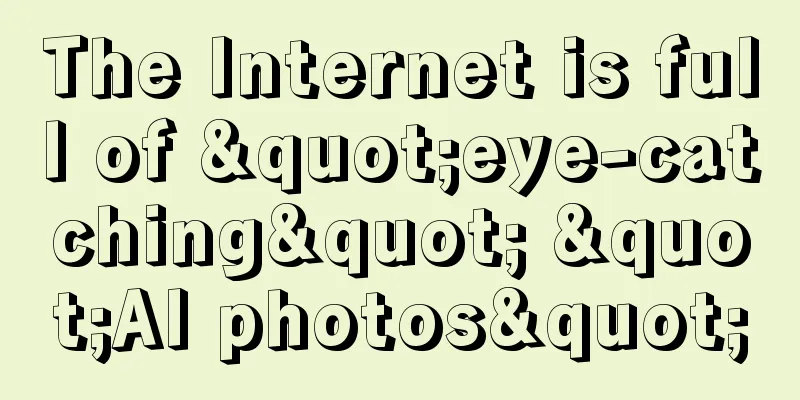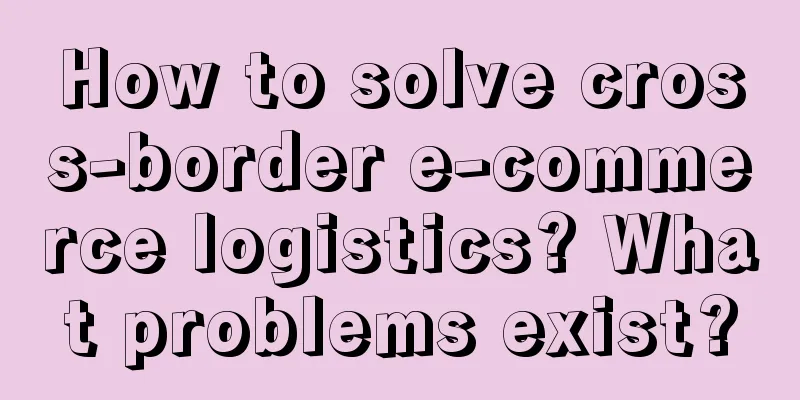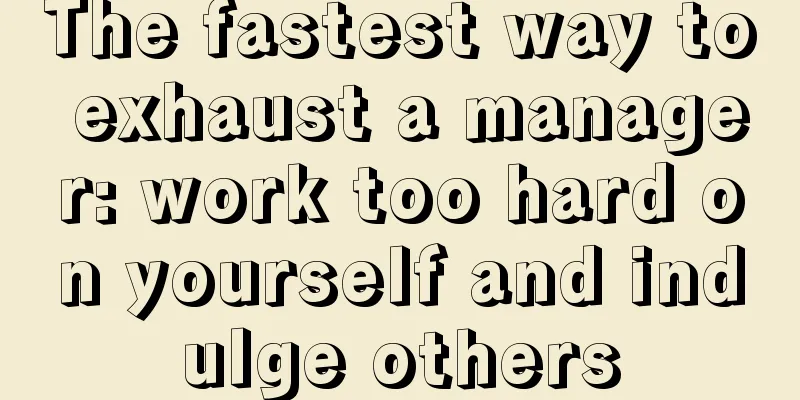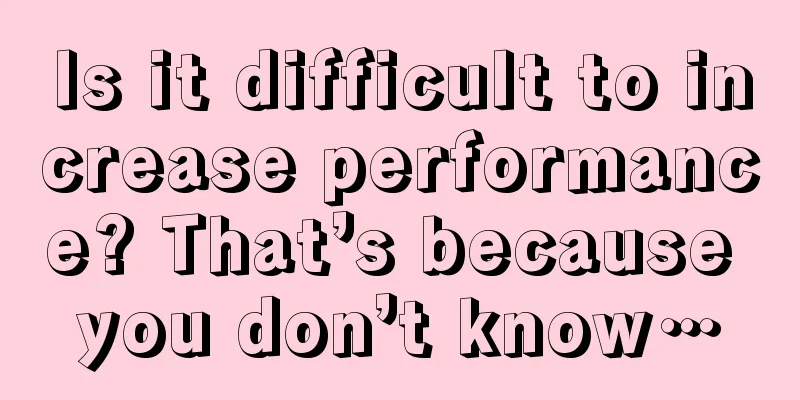In 2025, will brand awareness building return to the center of attention?
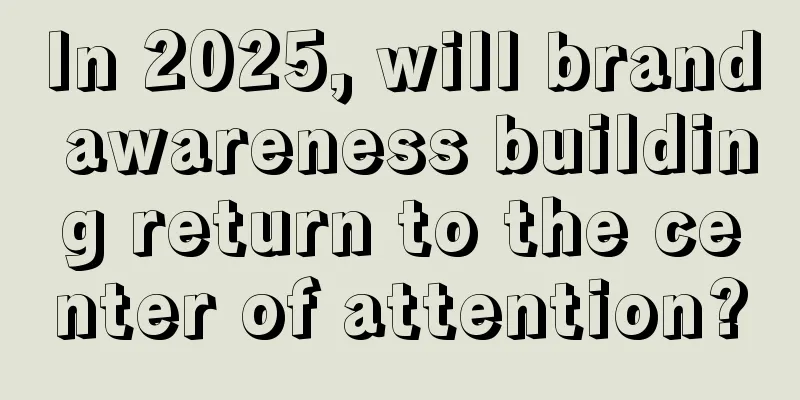
From last year to this year, a slightly strange phenomenon began to emerge: more and more platforms and brands have reiterated the importance of "mind". "Mind" is not a new concept, it is a product of the traditional marketing era. In that era dominated by mass media, brands tried to occupy a place in consumers' minds through overwhelming advertising and build the so-called "brand mind". Familiar advertising slogans such as "If you are afraid of getting a sore throat, drink XXX" and "Sales volume is far ahead" have successfully linked products with specific needs through high-frequency repetition, thus achieving huge success in the market. However, with the popularization of the Internet and the changes in the marketing environment, performance-oriented marketing methods have gradually become mainstream. Compared with traditional advertising that is difficult to quantify, especially mind marketing that emphasizes long-term impact, performance advertising can directly track data such as conversion rate and click volume, better meeting advertisers' pursuit of return on investment. As a result, emerging marketing methods such as grass-planting, private domain traffic operation, and live streaming have rapidly emerged, and marketing strategies aimed at short-term effects have become popular. The concept of "mind" has gradually faded from people's horizons and even become the target of criticism within the industry. However, since last year, the trend seems to have changed. More and more brands have begun to re-examine long-term value and emphasize the importance of brand building and mindset. At the same time, some platforms have also keenly captured this trend and launched related tools and services to meet market demand. For example, Bytedance launched a mind measurement tool to help advertisers better evaluate the effectiveness of mind building; Bilibili also emphasized the importance of mind in its MATES population model, incorporating it into the important dimension of user analysis. Why is the mind starting to be taken seriously again? 01 The mind is an imagined communitySpeaking of mind, I remember an incident I encountered at work. I was in a meeting with my boss once, and everyone kept saying that our brand should be mindful. When the boss asked what mindfulness was, several people couldn't give the correct answer. So, let’s first talk about what the mind is. I have been reading Yuval Noah Harari's book recently. Anyone who has read his book "Sapiens: A Brief History of Humankind" must be impressed by his ability of human beings to make up stories. Harari firmly believes that it is this unique ability that has reversed the development trajectory of intelligence and has become the key force in driving intelligence to its current level. In his latest work, Beyond Sapiens, Harari further equates this ability with "mind." He said: "Subjective reality (such as pain) exists only in the mind of an individual, but intersubjective reality (such as laws, gods, nations, corporations and currencies) exists in the connections made by many minds. More specifically, such reality exists in the stories people tell each other. These intersubjective realities do not refer to anything that already exists, but are created by humans in the process of exchanging information." Harari's view reveals the essence of the mind: it is the cognition and belief imagined and constructed by a group of people. Such a "mind connection" is actually the same as the "mind" mentioned in advertising and marketing. Harari's view actually draws on the theory proposed by Benedict Anderson in "Imagined Communities". Anderson believes that "nation" is not an objective entity, but a community imagined by a group of people. Although members of the nation do not know each other, they have established a psychological sense of community through language, culture and media. In other words, "nation" is also a collective mind and a common imagination of the people. Anderson summarizes several necessary factors for the emergence of "imagined communities", including the decline of religious communities and dynasties, the standardization of language, common historical narratives, the development of print capitalism, and the convenience of administration and travel. These factors work together to enable people to imagine a community that transcends geographical limitations and is composed of people who do not know each other. It is not difficult to find that Harari's "mind connection" and Anderson's "imagined communities" are essentially exploring the concept of "mind", but they apply it to the fields of religion and politics. Turning our attention to the field of advertising and marketing, the concept of mind mentioned here is derived from Trout and Ries' positioning theory. In a highly competitive market environment, brands need to find their own positioning, occupy the gap in the market category, and then occupy a place in the minds of consumers. In marketing, there are two types of minds: One is objective mind: This is the user's spontaneous perception of a brand or product. For example, Kindle is jokingly called the "instant noodle artifact" and Audi is praised as the "lamp factory". These are the inherent impressions formed by consumers through long-term use and observation. The other is subjective mind: this is the perception that brands deliberately build in consumers’ minds through marketing activities, especially advertising. For example, the slogan “If you are afraid of getting angry, drink Wanglaoji” successfully links Wanglaoji with the need to “reduce internal heat”, occupying a specific position in consumers’ minds. Whether it is the objective mind or the subjective mind, it is essentially an "imagined community". They are not objective facts, but the result of the common imagination of consumer groups. The birth of the mind also requires some necessary conditions, which are similar to the factors for the formation of an "imagined community": Centralized media: In "Imagined Communities", the invention of printing enabled culture and consensus to spread quickly, thus promoting the formation of the fictional community of "nation". In today’s marketing field, centralized media (such as TV ads) play a similar role. These media provide a unified channel for the dissemination of brand information, allowing brand information to reach consumers on a large scale and build a unified cognitive foundation. Extensive use of advertising slogans and brand symbols: In "Imagined Communities", with the decline of Latin, local languages such as English and French were unified as national languages, and national identity and cohesion were also enhanced in the process. In the field of marketing, the extensive use of advertising slogans and brand symbols plays a similar role. Through carefully designed advertising slogans and unique brand symbols, brands repeatedly strengthen their core values and image, thereby establishing a clear brand recognition in the minds of consumers. Brand stories give consumers emotions and identity: common history and legends, heroes and important events constitute the basis of a nation’s common memory and identity. These narratives are passed down from generation to generation through literary works, history books, oral legends, etc., enhancing national cohesion. Today, brands tell stories, build emotional connections with consumers, give them an identity, and thus enhance brand loyalty. Therefore, we can conclude that the mind is an "imagined community", which is the collective imagination of a specific group (consumers) about a certain brand or product. This imagination is crucial. The right collective imagination can promote sales, while the wrong collective imagination will lead to market resistance. For example, a milk powder brand used a lot of advertising to promote its products as "more suitable for Chinese babies' physiques". Even though this statement lacked scientific basis, it successfully established a "professional" image in the minds of consumers, thereby boosting sales. On the contrary, a certain SPV car, whose appearance was considered to be like a coffin, also formed a negative collective imagination, which seriously affected its market performance. 02 Why are big platforms starting to re-emphasize mindset?As mentioned above, for a long time, Internet platforms have been clearly differentiated from traditional advertising by virtue of the visibility of marketing effects, attracting a large number of brands to invest. Compared with the "blind investment" of traditional advertising where the conversion effect cannot be seen, performance advertising helps brands accurately measure the effect of advertising through data and real-time feedback, and quickly won the favor of the market. However, now these Internet platforms have also begun to talk about the importance of "mind marketing". There are several key reasons behind this: The cost of advertising is getting higher and higherIn the golden age of Internet development, performance advertising has become the preferred marketing tool for many brands with its significant advantages of accurately positioning target customer groups and quickly facilitating transactions. However, in recent years, with the continuous intensification of market competition, the competition among brands in the field of performance advertising has become increasingly fierce. In order to compete for limited traffic resources, everyone is willing to bid higher, which has led to a surge in advertising costs. At the same time, consumers’ immunity to advertising is constantly increasing. Under the bombardment of massive amounts of information, they are becoming more savvy and picky. This has directly led to a sharp decline in the conversion rate of performance advertising and a continuous decline in ROI, making it difficult to reproduce the immediate and brilliant results of the past. Since short-term pressure cannot be solved, it is better to paint a pie in the sky and say it is for the long term. When times get tough, people start talking about long-termismDuring economic downturns or industry bottlenecks, companies often face tremendous operating pressure. The decline in short-term performance has caused many companies to re-examine their business strategies. However, if short-term pressure cannot be solved by performance advertising alone, then "long-termism" becomes a good "placebo". Instead of struggling in vain for short-term effects, it is better to depict a beautiful long-term vision and shift the focus to brand building and user accumulation. As an important part of long-termism, mental marketing has naturally received attention. Competition is fierce, and intelligence becomes a differentiating solutionIn today's consumer goods market, almost every major category has entered a red ocean of competition. From coffee and milk tea to skin care products and sports shoes, there are countless players competing for market share in every field, and consumers are facing an increasingly serious phenomenon of choice overload. In this context, the functional differences between brands are getting smaller and smaller, and price wars cannot continue. Differentiation of mental cognition has become the key to breaking through. Through mental marketing, brands can occupy a specific position in the minds of consumers, deeply implant brand value and emotional resonance in their minds, thus achieving the transformation from "brand choice" to "brand preference". The platform also wants to make money from brand advertisingIn the early days, Internet platforms relied on the myth of performance advertising to earn a large amount of advertising budget from brand owners. However, as the dividends of performance advertising gradually disappeared, the platforms also faced new growth pressures. In order to continue to attract brand owners to stay on the platform and tap into greater commercial value, the platform began to change its strategy, emphasizing the importance of brand building and mind marketing. By launching mind measurement tools and providing brand building solutions, the platform attempts to keep brand owners in its ecosystem and take a share of brand advertising budgets. In this way, the platform makes up for the revenue gap caused by the decline in performance advertising. The lack of new marketing methods means that we can only revisit the old issuesIn the past few years, new marketing methods such as seed marketing, live streaming, and private domain traffic have emerged one after another, but after a period of development, the dividends of these models have gradually been exhausted. The industry lacks new disruptive technologies or concepts to drive growth, causing the entire marketing industry to enter a "low tide of innovation." In the absence of new gameplay or new models, brands and platforms choose to repackage the traditional concept of "mind marketing" and promote it in the form of "old wine in new bottles". This phenomenon is not uncommon: when an industry is unable to launch a completely new growth engine, it tends to return to the "old strategies" that have been proven in the market and improve them with new technological means. 03 The mind is more important than the effectWhen I was in middle school, I often went home with a few classmates who lived close to home. Once I caught a cold and was walking on the road. My classmates heard my nasal voice and asked, "Why don't you take medicine?" I said, "Once I take cold medicine, I feel sleepy in class and the teacher will scold me." The classmate said naturally: "Then you can try white and black. Take the white pills during the day and you won't feel sleepy. Take the black pills at night and you will sleep well." I asked curiously, "Have you ever eaten it?" He said, “No.” I asked again: “Why do you recommend it?” He said, “I saw the ad.” I didn’t think much about it when I was young, but now I look back on this experience from a marketing perspective and realize that my classmate’s recommendation of Baijiahei to me was, in a popular way, a kind of “grass planting”. Although he had not personally experienced the product, he was well aware of the product’s characteristics due to the long-term influence of the advertisement and naturally recommended it to me. We may call this kind of promotional activity "mental promotion". When a product successfully occupies a place in the minds of consumers after a long period of in-depth communication with them, even if the recommender is not a direct user of the product, his promotional activity is very persuasive. This kind of "mental seeding" is different from the common seeding methods on social platforms such as Xiaohongshu and Douyin. The latter is more based on functional recommendations, such as bloggers sharing specific usage methods, effect comparisons, discount information, etc. of a product, and its goal is also more focused on rapid conversion, that is, guiding users to buy immediately. Although the grass-roots content on these platforms can influence users' minds to a certain extent, it is more based on the characteristics of the product itself and short-term promotional activities, making it difficult to establish long-term brand loyalty and deep emotional connections. The value of “mental planting” lies in its ability to create a powerful “tap water” effect for the brand. If a brand can plant seeds in the minds of consumers, then it will no longer have to pay to do seed marketing on social networks. |
>>: When a large number of North Americans flock to Xiaohongshu...
Recommend
Why doesn't Amazon recommend making phone cases? How to choose products?
On Amazon, everyone knows that this Amazon platfor...
To seize the opportunity of Xiaohongshu, you must seize the opportunity of store broadcasting
This article will delve into the rise of store bro...
Why is business logic so important?
This article introduces the basic concepts of busi...
Oh my god! This is how to make money by taking advantage of the “information gap”! ! Uncovering the information gap between the southern and northern Internet circles…
There is also a certain "information gap"...
Brand No. 1: How to use verbs to call to action
This article shares five key points that need to b...
What is cheaper on Amazon than in China? What is the best deal on overseas shopping on Amazon?
Amazon is still very popular as a cross-border e-c...
How many sites does the Lazed platform have? How do I choose?
There are many cross-border e-commerce platforms o...
How to set up Amazon advertising? Detailed steps
Whether it is Taobao, JD.com, Pinduoduo, or Amazon...
How to quickly place orders in a new Shopee store? Experience sharing
The Shopee platform is developing faster and faste...
Bawang Tea Princess: A consumer product that takes Internet thinking to its extreme
In mid-August, Bawang Chaji announced the "ca...
The old domestic products are divided into two categories: some are revived, some are in the final glory
How can old domestic brands achieve self-salvation...
Is cash on delivery common on independent websites? What are the payment methods?
There are many merchants who run independent websi...
In order to pay off debts, Zhong Xuegao sold sweet potatoes
Due to the company's operational difficulties,...
Bytedance teaches Xiaohongshu a lesson as the community for planting grass goes global
ByteDance’s deep pockets are in stark contrast to ...
What are the requirements for doing business on eBay?
There are many cross-border e-commerce platforms n...



